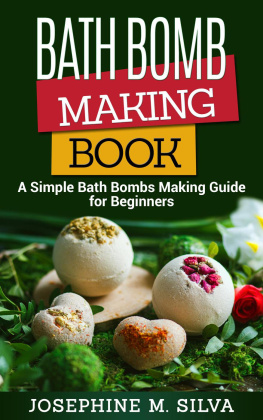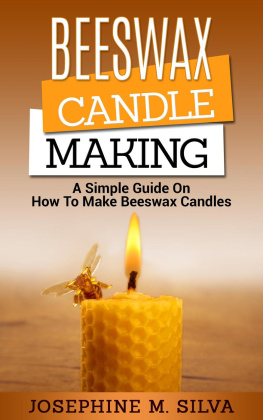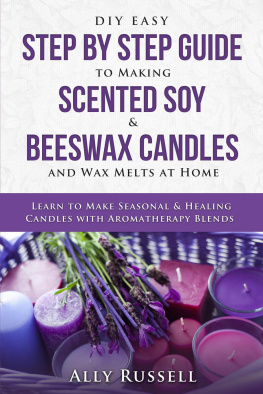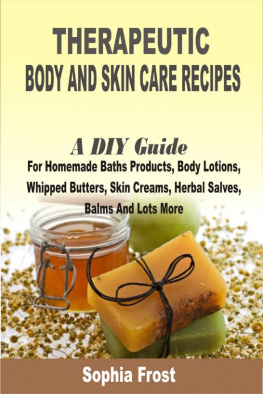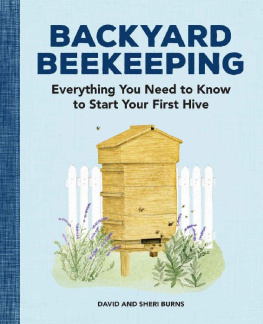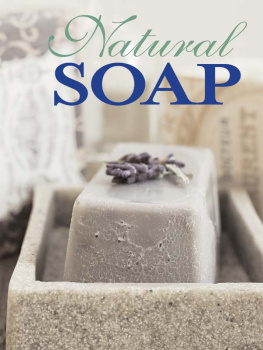Beeswax Alchemy
Make Your Own Special Beeswax Soaps, Candles, Balms, Creams and Salves
Josephine M. Silva
Copyright 2017 by Josephine M. Silva- All rights reserved.
This document aims to provide exact and reliable information in regards to the topic and issue covered. The publication is sold under the idea that the publisher is not required to render accounting, officially permitted or otherwise, qualified services. If advice is necessary, legal or professional, a practiced individual in the profession should be ordered.
From a Declaration of Principles, which was accepted and approved equally by a Committee of the American Bar Association and a Committee of Publishers and Associations.
In no way is it legal to reproduce, duplicate, or transmit any part of this document by either electronic means or in printed format. Recording of this publication is strictly prohibited, and any storage of this document is not allowed unless with written permission from the publisher. All rights reserved.
The information provided herein is stated to be truthful and consistent, in that any liability, in terms of inattention or otherwise, by any usage or abuse of any policies, processes, or directions contained within, is the solitary and utter responsibility of the recipient reader. Under no circumstances will any legal responsibility or blame be held against the publisher for any reparation, damages, or monetary loss due to the information herein, either directly or indirectly.
Respective authors own all copyrights not held by the publisher.
The information herein is offered for informational purposes solely and is universal as such. The presentation of the information is without contract or any type of guarantee assurance.
The trademarks that are used are without any consent, and the publication of the trademark is without permission or backing by the trademark owner. All trademarks and brands within this book are for clarification purposes only and are owned by the owners themselves, not affiliated with this document.
WHAT IS IN THE BOOK?
I n this book, you are going to learn more about beeswax, and how to incorporate it into some useful and healthy products you can use every day, such as soaps, candles, balms, and much more! You can use beeswax in your home and make fantastic beauty products that will most certainly make you, and your family and friends, happy.
Today, you are going to learn how to make your own candles, balms, salves, and more, using several ingredients in addition to beeswax. You probably already have the elements you need in your kitchen, so this is going to be extremely fun and entertaining as well as cost-effective. Many modern beekeepers wonder what to do with all the beeswax produced by their hives. Fortunately, the possibilities of using beeswax are limitless, from decorative to holistic uses. You can make various beauty and health products from the comfort of your home. Finally, you are going to learn how to make amazing and exceedingly useful gifts for your friends and family while also saving some money.
Beeswax is almost magical. It is a natural wax produced by honeybees. The wax is formed into many different sizes and shapes of scales divided by eight wax-producing glands possessed by worker bees. This all-natural wax is produced in the abdominal segments of worker bees who further discard it at or in the hive. The hive worker bees collect and use it to form cells for honey storage. They also use it for pupal and larval protection within the beehive.
Chemically speaking, beeswax consists of various long-chain alcohols and esters of fatty acids. This natural bee-produced wax has long-standing uses in the food we eat, among other uses. For instance, it is commonly used as a sweetener, a glazing agent, or as a heat or light source. Beeswax is edible and has many benefits to our health. Most European Union countries approved it for human usage many years ago, but today it is approved to use and eat in almost every country in the world.
Although it has excellent benefits to our overall health, the wax monoesters in beeswax are very poorly hydrolyzed in the human gut, so beeswax has insignificant nutritional value. As mentioned earlier, worker bees secrete it from wax-producing mirror glands located on the inner sides of the ventral plate or shield of each segment of their body on abdominal segments four to seven. The size of these wax glands depends upon the bees age. In addition, these glands begin to atrophy after many daily flights.
The new beeswax is initially colorless, becoming gradually opaque after adulteration and mastication with pollen by the worker bees. Also, the wax becomes progressively more brown or yellow by incorporation of propolis and pollen oils.
Honeybees use the wax they produce to build honeycomb cells where they raise their young with pollen and honey cells being capped mainly for storage. To secrete wax, the temperature of these hives have to be around 91 F to 97 F. The amount of honey used by the worker bees to produce the wax has never been accurately determined.
When beekeepers extract honey, they cut off the wax caps from every honeycomb cell with a machine or uncapping knife. The color of the honey varies from brownish to nearly white. However, it is most often some shade of yellow, although this depends on the region, purity and the type of flowers the bees used for gathering. Wax from the brood comb tends to be darker in color than wax gathered from the honeycomb.
In addition, impurities also accumulate faster in the brood comb. Therefore, this wax must be rendered before it is used due to the impurities. The leftovers of this process are called slum gum. The wax is clarified more by heating in water. It also can be softened via dilution with vegetable oil or mineral oil to make it more workable at optimum room temperature.
HISTORICAL USES OF BEESWAX
B eeswax among horn , tortoiseshell, gutta-percha, and shellac was the first to be practically used. For thousands of years, it has had a wide range of applications. It has been found in wrecked Viking ships, Egyptian tombs, and Roman ruins, suggesting people for thousands of years were aware of its benefits. As you can see, beeswax is the great miracle of the beehive, used for thousands for years in a great many things.
Historically, it has been used in the manufacture of cosmetics as one of the primary modeling materials in cire perdue or low-cost process. Beeswax has also been used for producing candles. The oldest intact beeswax candles were found in Germany, dating back to the 7th century AD. Beeswax has also been used for wax tablets for writing. Other applications of beeswax were in bow making, for preserving sewing cordage, thread, and shoelaces. It has also been used to stabilize Torpex, the military explosive, before products based on petroleum replaced it.
You may also have not been aware that beeswax has been used as a component of sealing wax. It has been used for encaustic painting like the Fayum mummy portraits as well. It was used to form the mouthpieces of various types of instruments, like the Philippine kutiyapi boat-lute. It was also used in producing Javanese batik, various ancient types of tooth fillings, as the joint filler of billiard tables, as a lubricant of sealant for cap bullets and a multitude of other ball firearms.
Next page

